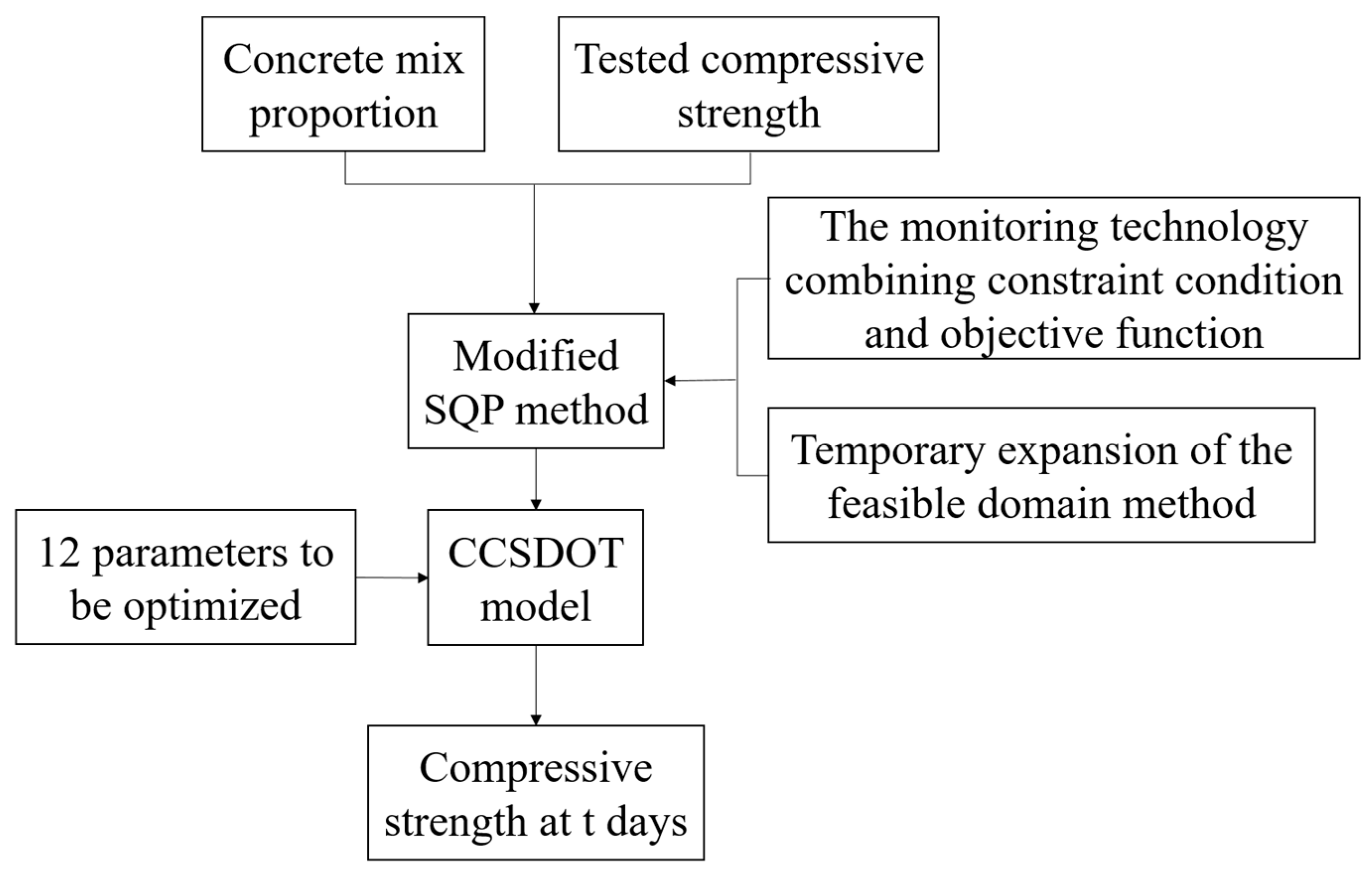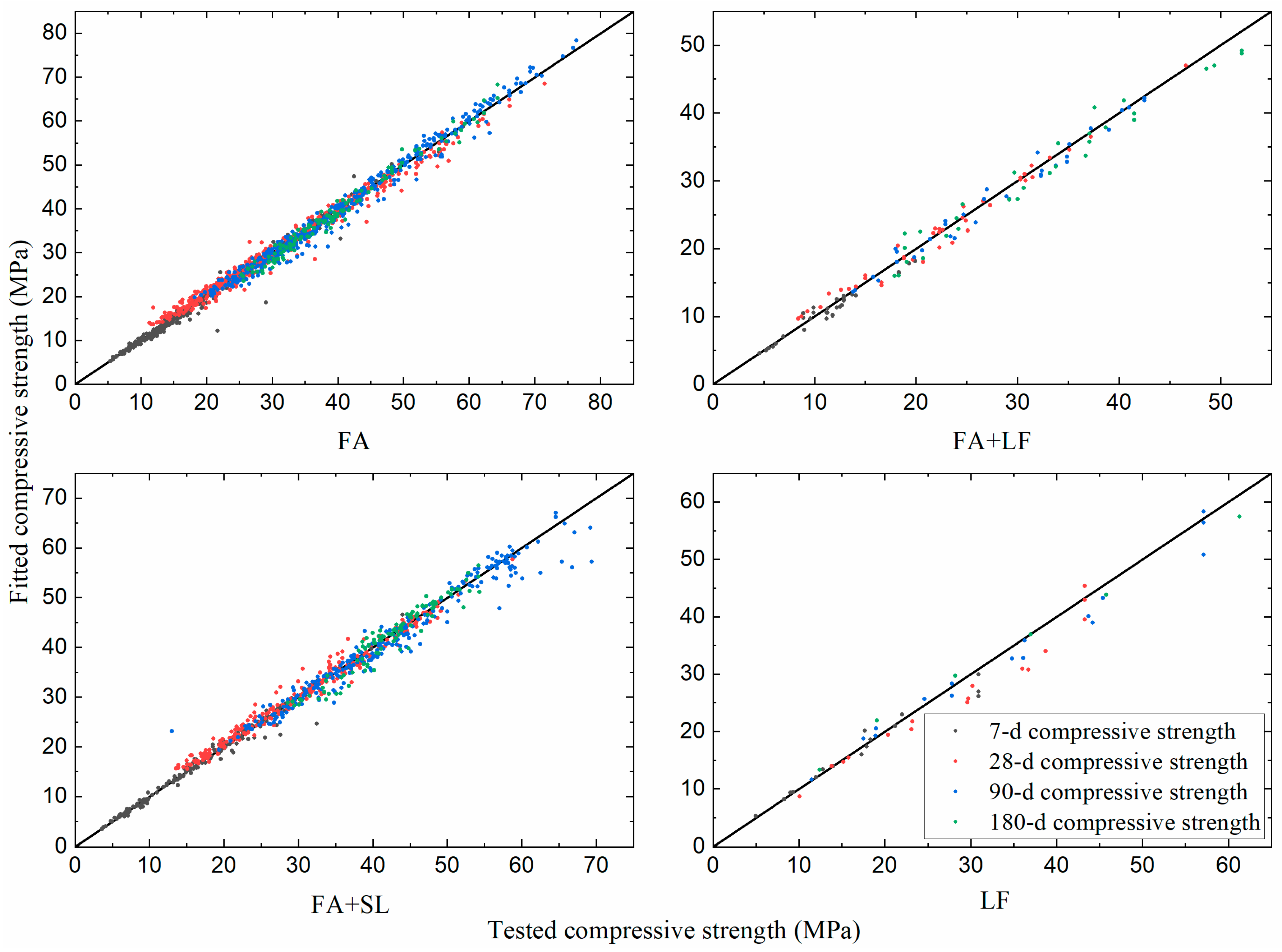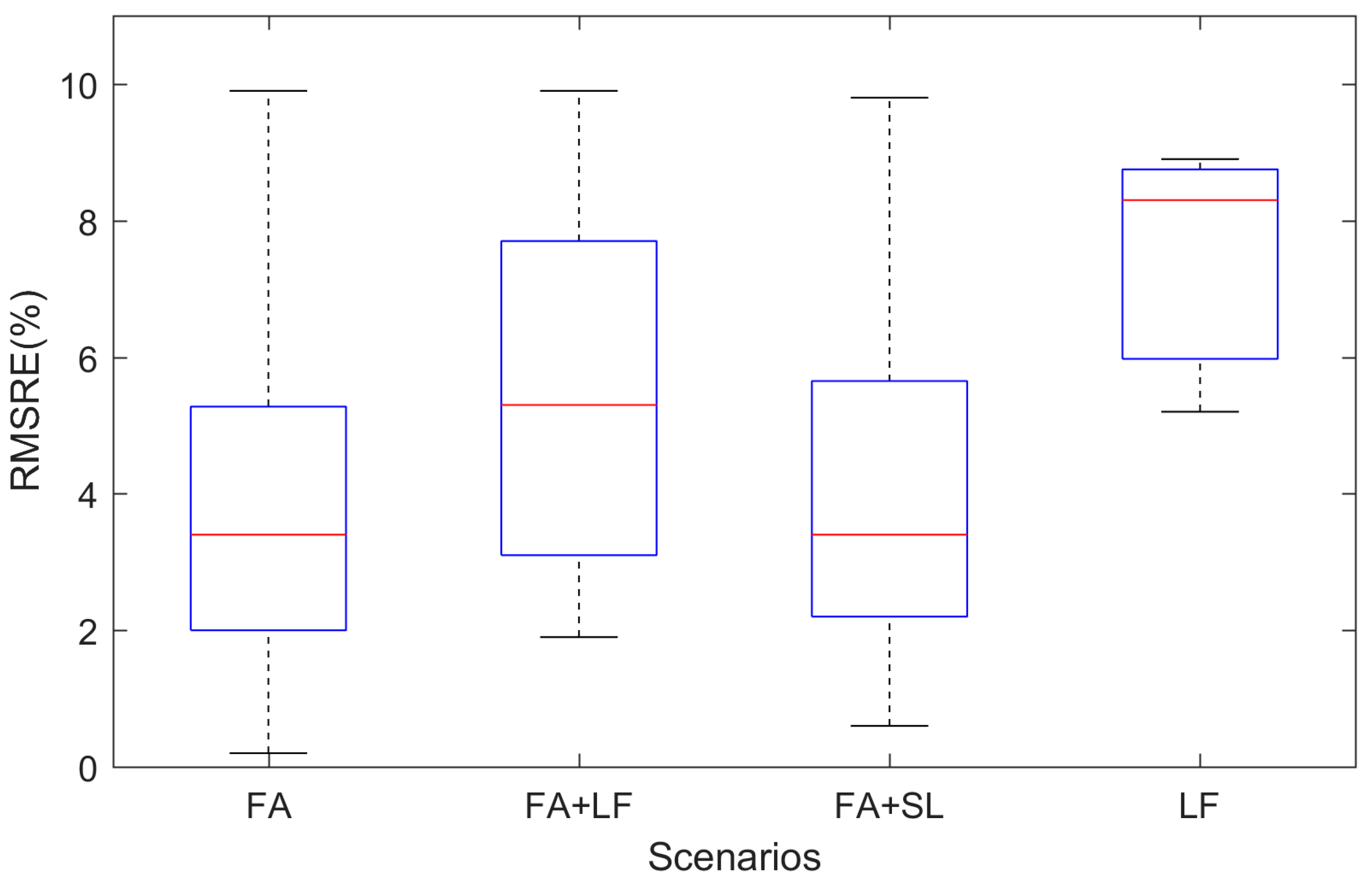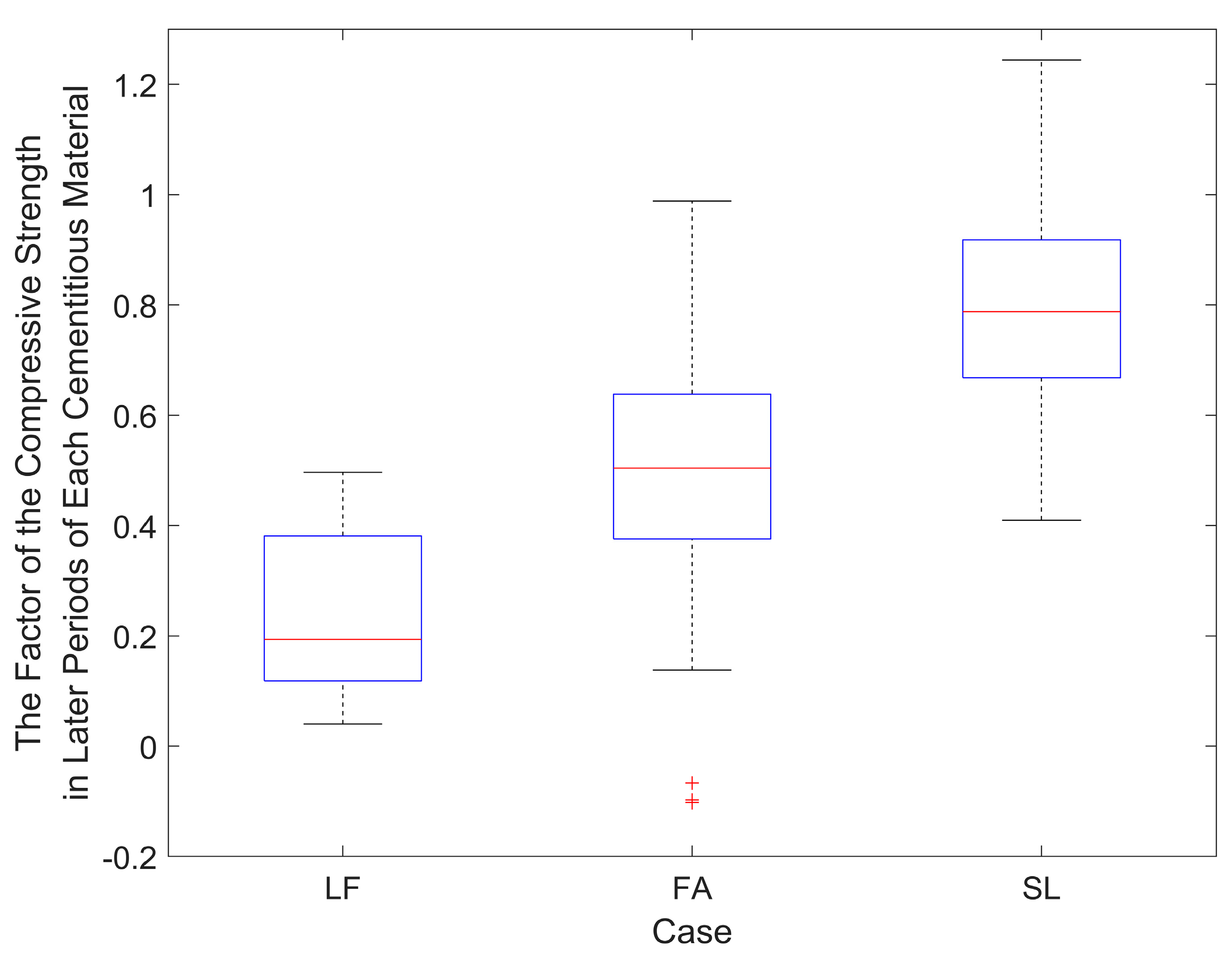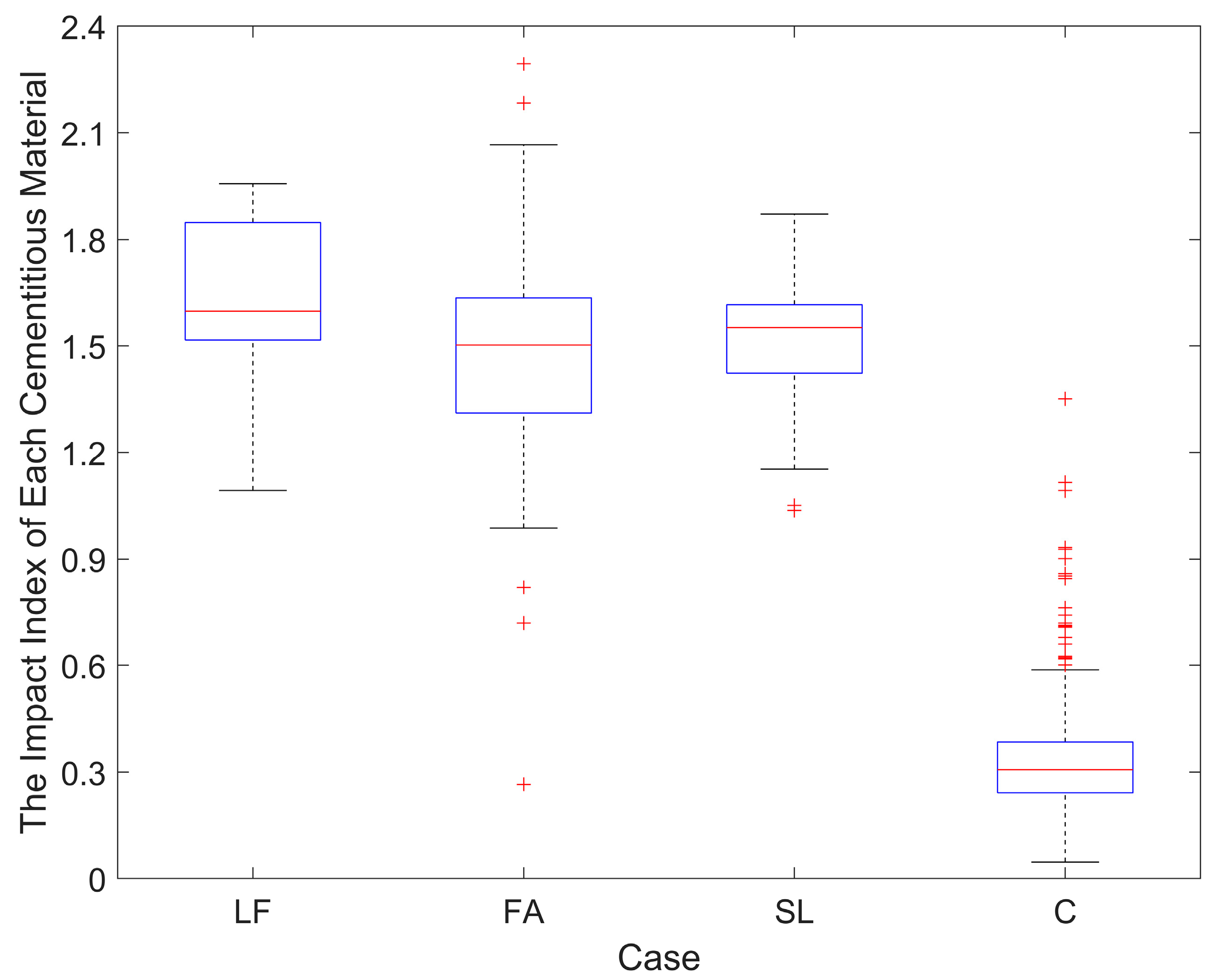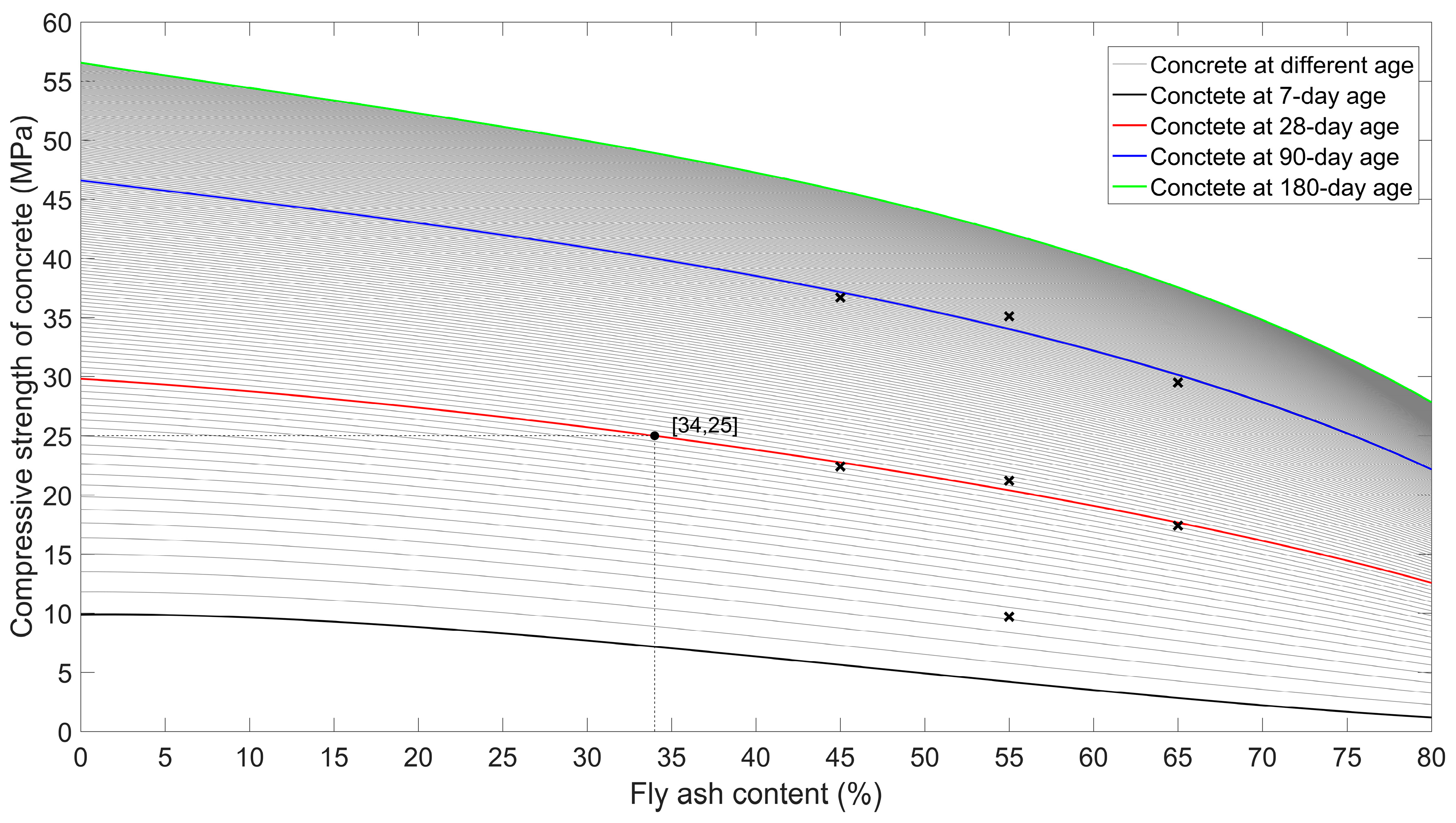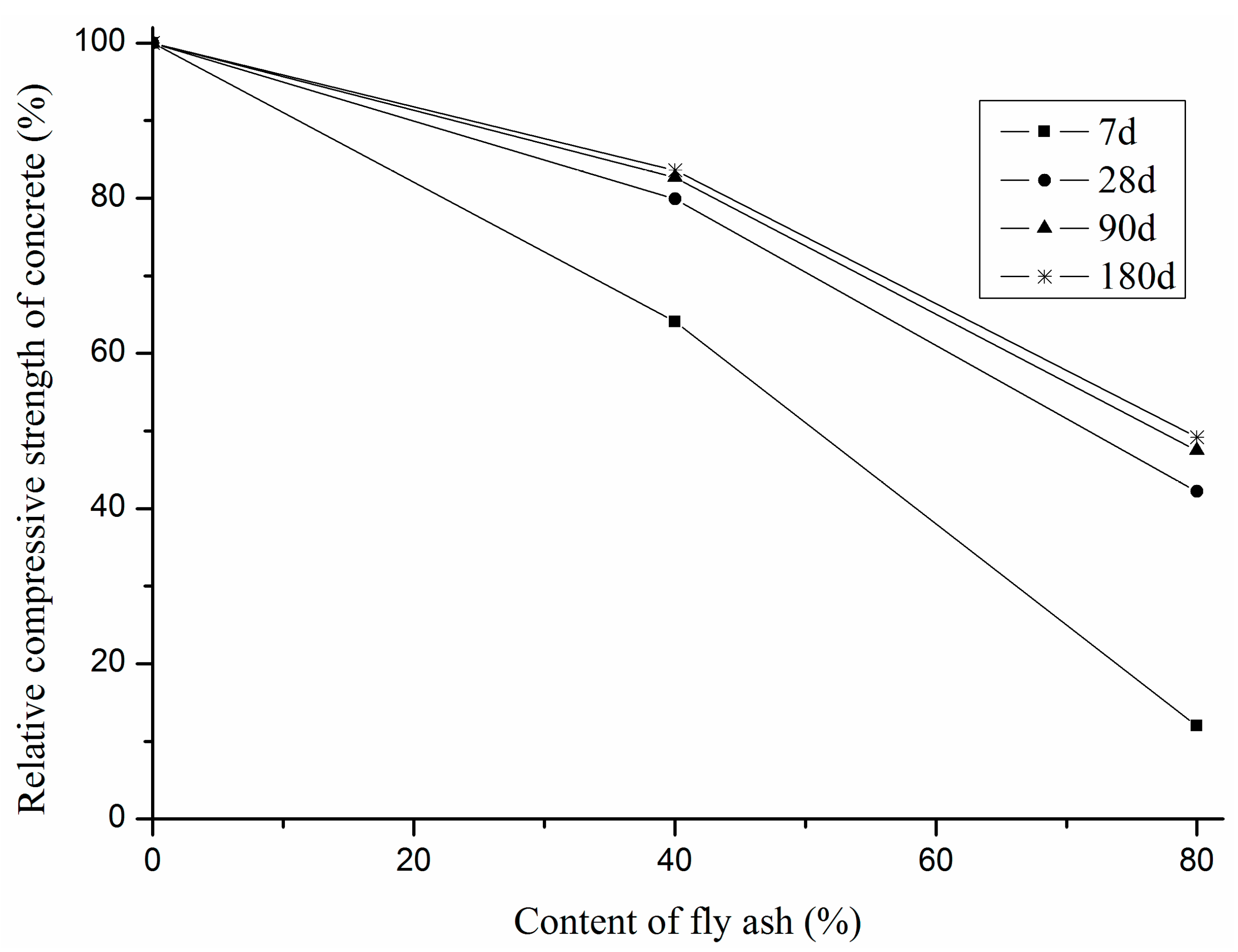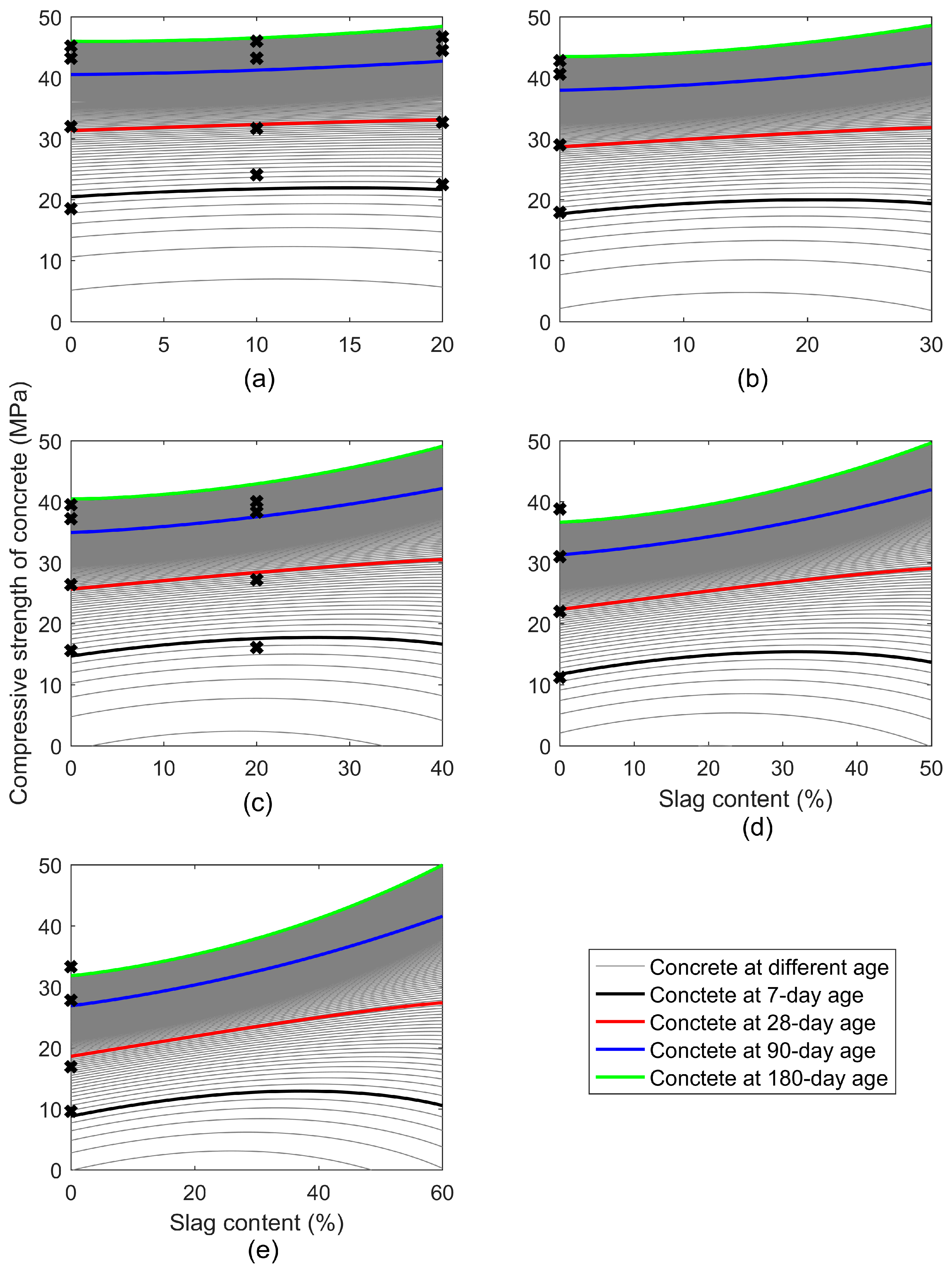1. Introduction
In recent years, urbanization and the rapid development of large-scale infrastructure have created a huge demand for concrete and Portland cement [
1]. Considering environmental protection, energy conservation, and resource benefits [
2], more and more supplementary cementitious materials, including slag [
3], fly ash [
4], and limestone flour [
5], are added into concrete as partial cement replacement material. In addition, the three supplementary cementitious materials have significant influence on the compressive strength of concrete [
6]. Compressive strength is assumed to be one of the most important and essential properties of concrete, since it usually shows the overall quality of concrete [
7]. Moreover, slag, fly ash, and limestone flour can enhance the durability [
8,
9,
10,
11,
12], workability [
10,
12,
13], and permeability [
10,
14] of concrete.
Slag has been successfully utilized in many countries around the world, achieving technical benefits in the construction industries in recent years [
3,
15]. Meanwhile, fly ash has also been used as a partial replacement of cement in concrete because of its pozzolanic effect [
4]. However, fresh concrete incorporated with fly ash and cement reacts more slowly than that incorporated with cement only at an early age, especially at a high-volume replacement, because of fly ash’s lower hydration rate [
16,
17]. Therefore, the maximum compressive strength of concrete incorporated with fly ash needs more time to gain [
4]. Adding limestone flour into concrete as a partial cement replacement has been a research hotspot over the past two decades. One of the most common utilizations for limestone flour, cited in the open literature, is as a mineral admixture to improve workability of concrete [
5,
18,
19]. Moreover, limestone flour works well in reducing the expansion associated with sulfate attacks [
20] and decreases the cumulative amount of heat produced during hydration [
21].
Numerous studies illustrate how the utilization of slag, fly ash, and limestone flour can improve the workability of fresh concrete and the durability of hardened concrete [
6,
8,
22,
23,
24,
25] due to their pozzolanic reaction and micro-aggregate effect. Some studies have even reported that the use of slag, fly ash, and limestone flour can reduce the heat of hydration and thermal cracking of concrete [
26,
27,
28]. Oner [
8] indicates that the use of slag can reduce the porosity of concrete and improve the compressive strength of concrete. A laboratory investigation on the optimum level of slag for the compressive strength of concrete is presented, and the results show that the compressive strength of concrete increases as the slag content increases, up to an optimal point, over which the compressive strength decreases because of the nature of slag. The optimum level of slag content for maximizing the compressive strength is around 55%–59% of the total binder content by weight.
Many researchers have also studied the influence of fly ash on the compressive strength of concrete. Wongkeo W. [
29] has investigated the influence of high-calcium fly ash as a binary blended cement on compressive strength of self-compacting concrete, and the results indicate that binary blended cement with a high level of fly ash generally reduces the compressive strength of self-compacting concrete at all test ages (3, 7, 28, and 90 days). Lam M. N. T. [
30] has revealed that the use of fly ash as cement substitution can improve the compressive strength of slag-roller compacted concrete pavement at long-term age. Moreover, Shaikh F. U. A. [
31] has demonstrated the effect of ultrafine fly ash on compressive strength and durability properties of concrete containing high volume class F fly ash as partial replacement of cement. Some models have been developed to study the influence of fly ash on concrete’s compressive strength. Wang X. Y. [
32] presented a numerical procedure to evaluate the compressive strength development of high-volume fly ash concrete, which is valid for concrete with different water-to-binder ratios and different fly ash contents. Sarıdemir M [
33] used a genetic programming model to study the effect of specimen size and shape on compressive strength of concrete containing fly ash.
Limestone flour is usually assumed to be an inert filler [
21] and used as a partial replacement of cement in concrete [
34,
35,
36], which mainly provides a filling effect and micro-aggregate effect in the concrete [
37]. The fact that limestone flour does not participate in the chemical reaction is confirmed from both thermal analysis and backscattering scanning electron image analysis [
35]. Besides, other studies also find that limestone flour has low reactivity [
38,
39]. Although limestone flour is deemed to be an inert material, it can still improve the very early-age compressive strength of concrete, workability, and stability of fresh concrete due to its micro-aggregate effect [
40,
41]. However, a few researchers have reported that limestone flour has been successfully used in conjunction with cement as an accelerator [
42,
43]. Vance et al. [
1] illustrate the influence of limestone flour’s particle size on hydration and mechanical properties of cement pastes. In a word, the influence of limestone flour on concrete compressive strength is still unclear.
There are numerous studies about the influence of each supplementary cementitious material on the compressive strength of concrete, such as slag [
8], fly ash [
24], and limestone flour [
41]. Some studies demonstrate the influence of two or more kinds of supplementary cementitious materials on the concrete compressive strength [
1,
4,
44]. However, most of these studies are specific to a certain engineering or a certain experiment [
1,
4,
8,
24], which cannot reveal the nature of the influence of supplementary cementitious materials on the concrete compressive strength. Moreover, the research about the influence of two or more kinds of supplementary cementitious materials on concrete compressive strength is still unclear. Furthermore, there is a lack of clarity on the optimum proportion of one or more certain cementitious materials in a practical engineering or experiment. In order to identify the nature of the influence of supplementary cementitious materials on concrete compressive strength, it is necessary to conduct comprehensive and quantitative research, which would require a lot of experimental and engineering data instead of just using certain engineering or experimental data.
To solve these problems, it requires a model with explicit expression and ability to adapt new data, which can fit and predict concrete compressive strength. There are two main types of models, conventional models and artificial intelligence models [
45,
46], to predict the compressive strength of concrete mixed with supplementary cementitious materials. Generally, conventional models are developed with a fixed equation with a limited amount of data and parameters [
47]. If new data is different from the original data, then it is necessary to update not only the coefficients in the model but also the form of its equation. On the other hand, artificial intelligence models require a large training data set due to their “black-box” techniques [
48], and always having no explicit expression. Both aforementioned models are flawed. The concrete compressive strength development over time (CCSDOT) model [
49] generates explicit formulas that provide important advantages to reveal the nature of influence of the supplementary cementitious materials on concrete compressive strength. Therefore, it is adopted in this study. The inbuilt optimization algorithms make the CCSDOT model more adaptable to new data than conventional models.
This study employs 239 groups of mix proportions from 18 practical engineering experiments and lab reports to explore the nature of the proposed three supplementary cementitious materials. The application in engineering is presented as well. The investigation is expected to provide guidance on both the selection of supplementary cementitious materials and the design of concrete mix proportion for practical engineering; therefore, the study is highly critical. The overview of this study is shown in
Figure 1.
5. Conclusions
This study adopts the CCSDOT model with the modified SQP method and 239 groups of concrete mix proportions with tested compressive strength, accordingly, to find the nature of the influence of slag, fly ash, and limestone flour on concrete compressive strength. In addition, two application cases are analyzed for the selection of the three supplementary cementitious materials and the design of concrete mix proportion for practical engineering. The main findings of our study are as follows:
(1) The CCSDOT model has good performance in fitting the compressive strength of 239 groups of concrete from 18 practical engineering experiments and lab reports, and the of each group is acceptable in practical engineering.
(2) Through the calculation of numerous data by the CCSDOT model, the main parameter laws of the CCSDOT model can be obtained as follows: most of the are between −0.568 and −0.327, while the median of is −0.415. The are generally between −0.078 and 0.449, while the median of is 0.078. Most of the are between −0.437 and −0.761, the median of is −0.676. Most of the are between 0.668 and 0.918, while the median of is 0.788. Most of the are between 0.118 and 0.381 and the median is 0.194.
(3) The comparison among from three kinds of concrete incorporated with fly ash is demonstrated in this study. Most of the are smaller than the , while most of the are smaller than the . Meanwhile, most of the are greater than the , while most of the are greater than the .
(4) The comparison among slag, fly ash, and limestone flour indicates that most of the are smaller than the , while most of the are smaller than the . In the meantime, most of the are smaller than the , while most of the are smaller than the .
(5) Application in the Fengman hydropower station reconstruction project demonstrates that the maximum content of fly ash in Fengman hydropower station reconstruction project can be quickly found by using the CCSDOT model. Meanwhile, the usage of slag and fly ash in the Suofengying hydropower station can also be quickly found through the CCSDOT model to meet the design and financial requirements. It is helpful to guide the design and optimization of the engineering mix proportions.

